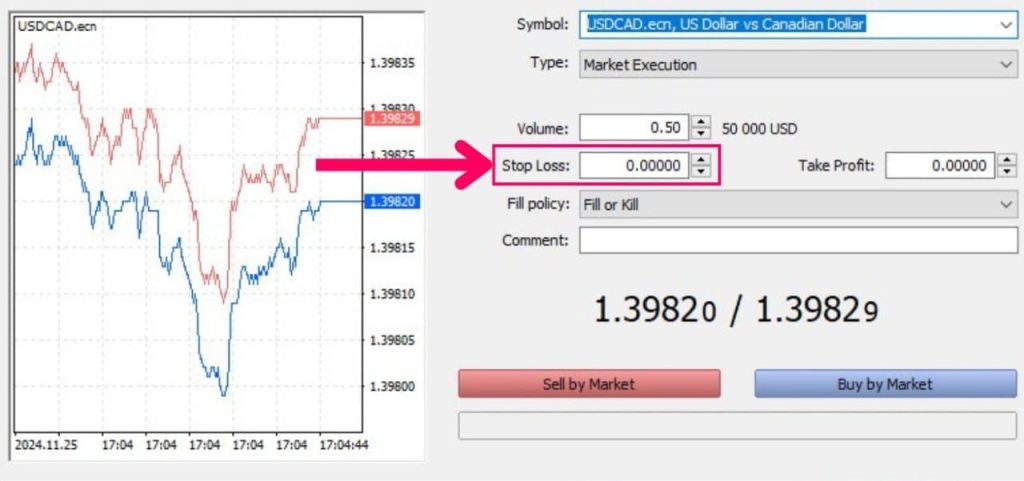
Mastering the Art of Stop Loss: A Comprehensive Guide
Estimated reading time: 6 minutes
Table of contents
Trading in financial markets can be highly rewarding, but it comes with inherent risks. One of the most crucial tools for managing these risks is the Stop Loss. Whether you are a beginner or an experienced trader, understanding and effectively using Stop Loss orders can safeguard your capital and enhance your trading performance. This guide dives deep into what Stop Loss is, how it works, and why it’s an indispensable tool for any trader.
What Is a Stop Loss?
A Stop Loss is a predefined order placed with a broker to close a trade automatically when the price reaches a specific level. Its primary purpose is to limit losses and prevent your trading account from taking a significant hit during unexpected market moves.
Think of a Stop Loss as a safety net. Just as you wouldn’t climb a mountain without proper safety equipment, trading without a Stop Loss exposes you to unnecessary risks.
How Does a Stop Loss Work?
For example, if you purchase a stock or currency pair at $100, expecting the price to rise, you can set a Stop Loss at $95. If the price drops to $95, the trade will automatically close, limiting your loss to $5. This mechanism allows you to step away from your trading screen with peace of mind, knowing your risk is managed.
Why Is Stop Loss Necessary in Trading?
1. Protection Against Significant Losses
Financial markets are unpredictable. Even the most well-planned trades can go against expectations due to sudden news, economic shifts, or other market conditions. A Stop Loss ensures that losses are contained and don’t spiral out of control.
2. Elimination of Emotional Trading
Emotions often interfere with rational decision-making. When traders hold onto losing trades, hoping for a reversal, they risk increasing their losses. A Stop Loss enforces discipline by executing your plan without emotional interference.
3. Time-Saving and Convenience
Markets operate around the clock, and it’s impractical to monitor trades 24/7. A Stop Loss automates your risk management, allowing you to focus on other tasks or simply relax.
4. Support for Consistent Risk Management
Stop Loss orders help traders adhere to their risk management strategies. By defining your maximum acceptable loss beforehand, you maintain consistency and protect your trading account over the long term.

Types of Stop Loss Orders
Not all Stop Losses are created equal. Different types serve different purposes, catering to various trading strategies and market conditions.
1. Fixed Stop Loss
A Fixed Stop Loss involves setting a specific price level. For instance, if you buy at $100, you might decide that $95 is the maximum loss you’re willing to bear. This type is straightforward and ideal for beginners.
2. Trailing Stop Loss
A Trailing Stop Loss moves with the price. As the price increases, the Stop Loss adjusts upward to lock in profits while still limiting potential losses. For example, if the price rises to $110, the Stop Loss might trail at $105. This method is excellent for protecting gains during strong trends.
3. Percentage-Based Stop Loss
Here, the Stop Loss is defined as a percentage of the entry price. For example, you might decide to close the trade if the price drops by 2%. This method is useful for traders who prefer relative rather than absolute levels.
4. Time-Based Stop Loss
A Time-Based Stop Loss closes the trade after a specified duration, regardless of price. This strategy is often used by day traders to avoid holding positions overnight or over weekends when markets are closed.
Read More: What is the Breakout Strategy?
How to Set a Stop Loss
1. Use Technical Analysis
Technical analysis is a powerful tool for determining optimal Stop Loss levels. Look for support and resistance levels—price points where the market historically reverses direction. Setting your Stop Loss just below support or above resistance can provide a logical safety margin.
2. Assess Your Risk Tolerance
Decide how much of your account you are willing to risk per trade. For instance, many professional traders recommend risking no more than 1–2% of your account balance on any single trade.
3. Account for Market Volatility
Markets with high volatility require wider Stop Loss levels to avoid premature activation. Conversely, in less volatile markets, tighter Stop Losses can be effective.
4. Align with Your Trading Strategy
Your trading style—whether scalping, day trading, or swing trading—should influence how you set your Stop Loss. Scalpers might prefer tighter Stop Losses due to the short-term nature of their trades, while swing traders may require more room for price fluctuations.
Read More: Comprehensive Guide to Trend-Based Trading Strategies
Calculating Lot Size with Stop Loss
The size of your trade, or lot size, should be directly linked to your Stop Loss distance and your risk tolerance.
Formula:
Lot Size = Account Risk (in $) / (Pip Value × Stop Loss Distance in Pips)
Practical Example:
- Account balance: $10,000
- Risk per trade: 1% ($100)
- Stop Loss distance: 50 pips
- Pip value: $10 per standard lot
Calculation:
Lot Size = 100 / (10 × 50) = 0.2
This means you should trade with 0.2 lots to ensure your maximum risk in this trade is $100.

Advantages and Disadvantages of Using Stop Loss
Advantages:
- Risk Management: Prevents large losses by closing trades automatically.
- Convenience: No need to monitor trades constantly.
- Emotional Control: Removes impulsive decision-making during market fluctuations.
Disadvantages:
- Premature Activation: Stop Loss can trigger during temporary price fluctuations, closing trades that might have eventually been profitable.
- Missed Opportunities: Setting the Stop Loss too close can lead to exiting a trade before the market moves in your favor.
Pro Tips for Effective Stop Loss Use
- Leverage Trailing Stop Losses
Trailing Stops are ideal for capturing profits in trending markets while still limiting losses. - Avoid Over-Tight Stops
Setting your Stop Loss too close to the current price increases the chances of premature activation. Allow room for the market to breathe. - Focus on Risk-Reward Ratios
Always ensure your potential reward outweighs your risk. A good rule of thumb is to aim for a 1:2 risk-to-reward ratio or better. - Review and Adjust
Regularly evaluate your Stop Loss strategy to ensure it aligns with market conditions and your trading goals.
Conclusion
A Stop Loss is a cornerstone of effective trading and risk management. By understanding its various types, learning to set it correctly, and integrating it into your trading strategy, you can protect your capital, reduce emotional stress, and improve your overall trading performance.
Remember, trading success is not just about making profits—it’s also about managing losses. A well-placed Stop Loss ensures you stay in the game, ready to seize the next opportunity.
Share
Hot topics

What Is the US Dollar Index (DXY) in Forex?
If you’ve spent any time exploring global markets, you’ve certainly heard about the US Dollar Index, known as DXY. For many beginner traders, it appears to be one of those...
Read more




Submit comment
Your email address will not be published. Required fields are marked *